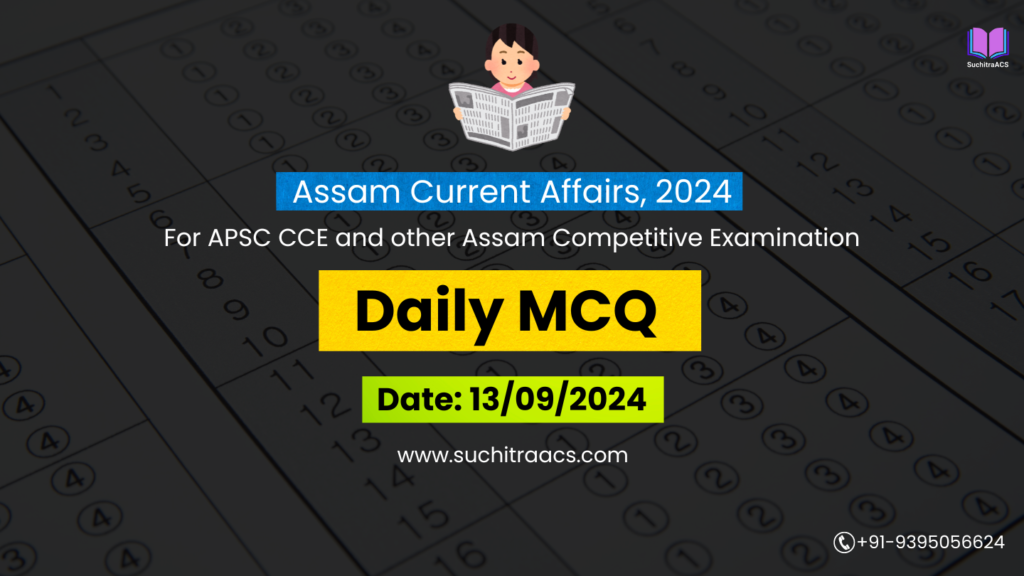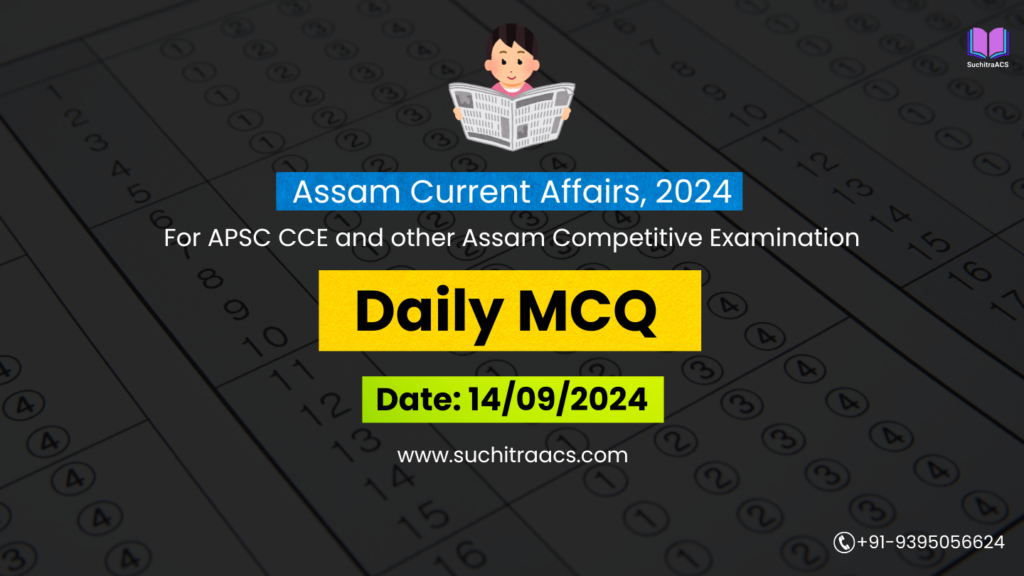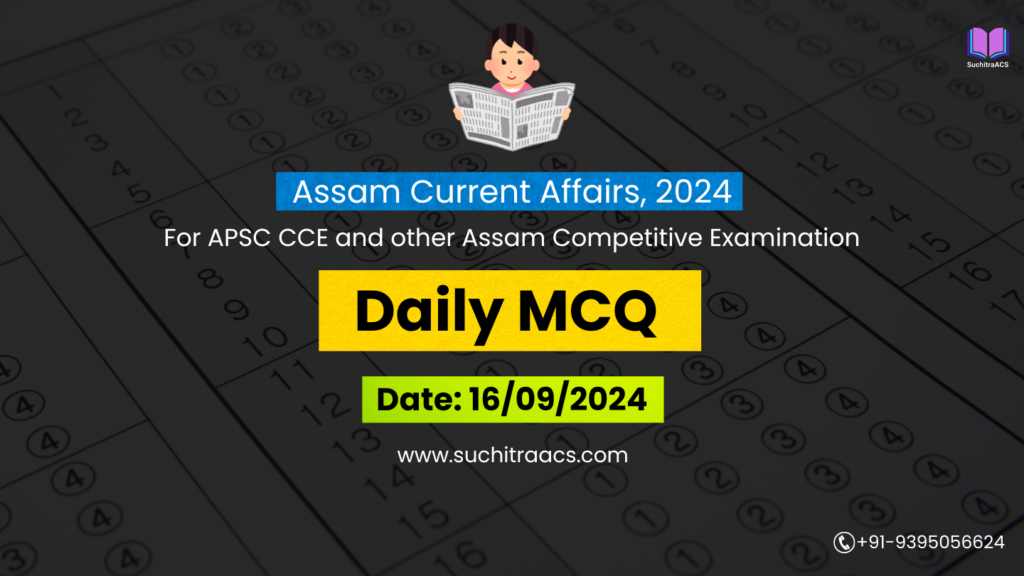APSC MCQs / APSC Prelims Practice Questions based on Assam Tribune (Daily) – 03/01/2025
For APSC CCE and other Assam Competitive examinations aspirants, practicing Daily MCQs is vital. This blog covers most important Prelims questions from the Assam Tribune today (03-01-2025). These issues are key for both APSC Prelims syllabus, offering insights into the important topics of current affairs.
APSC MCQs / APSC Prelims Practice Questions (Date: 03/01/2025)
1. Elephant Population Increases in Assam
Question 1: Which of the following Elephant Reserves (ERs) in Assam has the highest elephant density?
A. Kaziranga-Karbi Anglong
B. Chirang-Ripu
C. Dhansiri-Lungding
D. Dehing-Patkai
Answer: B. Chirang-Ripu
Explanation:
According to the Elephant Population Estimation (EPE)-2024 report, Chirang-Ripu Elephant Reserve recorded the highest density of 79 elephants per 100 sq km, showcasing its significance in Assam’s elephant conservation efforts.
Question 2: What does the term “Tusker-to-Makhna Ratio” refer to?
A. Ratio of adult male elephants with tusks to those without tusks.
B. Ratio of elephants in reserves to those outside reserves.
C. Ratio of elephants above 50 years of age to younger elephants.
D. Ratio of female to male elephants.
Answer: A. Ratio of adult male elephants with tusks to those without tusks.
Explanation:
The tusker-to-makhna ratio is a metric used to understand the population dynamics of elephants. In Assam, this ratio improved from 1:2.63 in 2017 to 1:1.97 in 2024, indicating better conservation outcomes.
Question 3: What is Radiotelemetry in the context of wildlife conservation?
A. A satellite-based monitoring system for river ecosystems.
B. A method to track wildlife movement using radio signals.
C. A technique for soil stabilization in elephant habitats.
D. A tool for measuring biodiversity in forest ecosystems.
Answer: B. A method to track wildlife movement using radio signals.
Explanation:
Radiotelemetry involves fitting animals with radio collars and using signals to monitor their movements. It is recommended for adaptive management in Assam’s elephant conservation efforts.
2. Assam’s Push for Anti-Erosion Measures Along Brahmaputra
Question 4: What are geotextiles, as used in anti-erosion projects along the Brahmaputra River?
A. Synthetic fabrics used to prevent soil erosion and stabilize embankments.
B. Traditional textiles woven by local communities for ecological preservation.
C. Biodegradable fabrics used to promote vegetation growth.
D. Natural fabrics used for constructing embankments.
Answer: A. Synthetic fabrics used to prevent soil erosion and stabilize embankments.
Explanation:
Geotextiles are permeable fabrics used in civil engineering to prevent soil erosion and stabilize embankments. They are a key component of Assam’s anti-erosion measures.
Question 5: Which of the following best describes the challenges caused by riverbank erosion in Assam?
- Displacement of communities.
- Biodiversity loss in riparian zones.
- Increased agricultural productivity.
Select the correct answer using the code below:
A. 1 and 2 only
B. 1 and 3 only
C. 2 and 3 only
D. 1, 2, and 3
Answer: A. 1 and 2 only
Explanation:
Riverbank erosion displaces thousands annually and causes biodiversity loss in riparian zones. It does not increase agricultural productivity; instead, it reduces arable land.
3. Assam’s Focus on Industrial Growth through Agro-Based Clusters
Question 6: Which districts have been identified for the pilot phase of agro-based industrial clusters in Assam?
A. Barpeta, Kokrajhar, and Lakhimpur
B. Dibrugarh, Jorhat, and Barpeta
C. Tezpur, Tinsukia, and Sivasagar
D. Kamrup, Goalpara, and Dhubri
Answer: B. Dibrugarh, Jorhat, and Barpeta
Explanation:
The pilot phase of Assam’s agro-based industrial clusters focuses on Dibrugarh, Jorhat, and Barpeta to enhance value addition and rural development.
Question 7: What is the primary purpose of land banks in the context of agro-based clusters?
A. Ensuring soil quality for farming.
B. Reserving lands for industrial use.
C. Allocating land for forest restoration.
D. Promoting real estate development.
Answer: B. Reserving lands for industrial use.
Explanation:
Land banks are reserved plots allocated for industrial development, easing land acquisition challenges for agro-based clusters in Assam.
 APSC Prelims Crash Course, 2025
APSC Prelims Crash Course, 2025
at most affordable rate in Assam!

🔔 Join Our WhatsApp Study Group!
For exclusive access to premium quality content, including study materials, current affairs, MCQs, and model answers for APSC CCE and other Assam competitive exams.
Click here to join: SuchitraACS Study WhatsApp Group
📚 Want to know more about SuchitraACS’s most affordable courses?
Click here to know more: SuchitraACS Courses for APSC CCE and Assam Competitive Examinations




